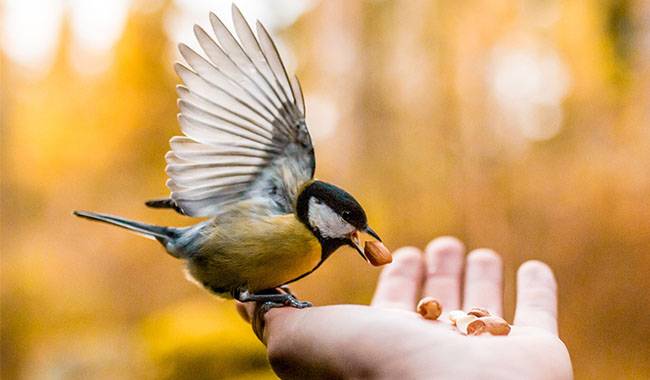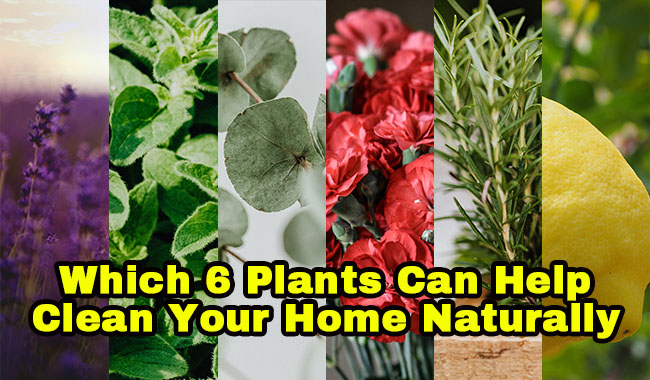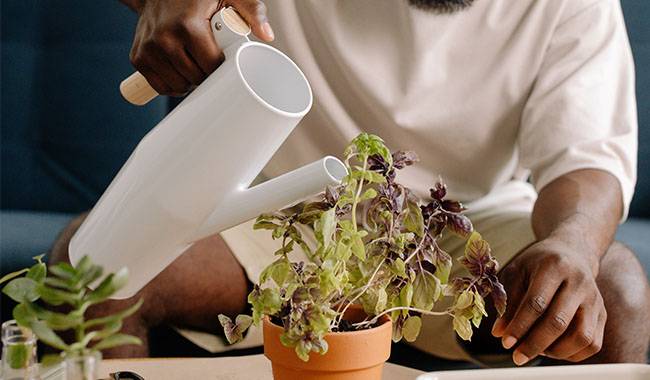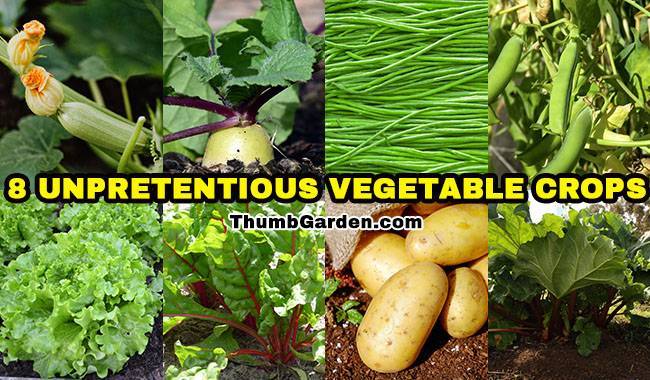
The summer heat and tend to crops can be quite tiring for experienced gardeners, and they only scare away novice gardeners. In order to turn your hard work in the countryside into an enjoyable vacation, you need to create your own garden wisely. In this article, we will examine 8 unpretentious vegetable crops with the website thumbgarden.com in order to decide which crops need to be planted.
Some Simple Rules for Planting a Vegetable Garden
At the cottage, there must be an area dedicated to garden crops. If you are a beginner summer resident, do not overdo it – it is easier and more pleasant to start with a small bed, just like a separate island to handle. The large area occupied by crops that require careful care (systems for watering, fertilizing, processing, and performing other tasks) will not leave time for the main purpose of the cottage is not exertion, but rest.
First, write down a list of crops that you need fresh every day.
Determine their location within or outside the garden plot (for example, along a pathway, in the form of a vegetable bed with green or spicy flavored crops). Find shaded and sunny areas. Shaded areas will be planted with crops that do not require direct sunlight.
Take, for example, the sunny area under the main garden where crops will be grown that require a larger area for nutrients, sunlight, frequent watering, etc. Do not take up the entire area with vegetables.
Plant the workable part and leave the rest, temporarily turning it into a natural, so-called Moorish lawn. Resting under herbs for 1-3 years will improve the soil. In open spaces, do not allow weeds to fertilize. Mow the tops when heavy flowering begins; the green grass will decay in the fall and winter, adding organic matter to the soil.
Layout beds are set aside for vegetable green crops that are sized so that you can easily reach them from the path of the processing plants. Optimal dimensions are 40 inches (1 m) wide and 80-120 inches (2-3 m) long. Leave the track about 20 inches (50 cm). It is not convenient to work in narrower areas, especially when watering, fertilizing, and spraying. This bed can easily be covered with film or other mulching material to prevent frost.
To repel pests, plant marigolds, marigolds, alstroemeria, and other natural insecticides in your garden. You will get a rustic garden, while the need for spraying insecticides will be greatly reduced.
Of course, in the garden, you can grow all vegetable crops. However, when you start preparing your garden bed, consider how much your family needs and whether you need to grow the entire list of crops. Perhaps it is more correct and practical to choose only the most needed fresh ones in your daily menu and then easily buy the rest at a green market or specialty online store?
Now let’s learn more about growing some of the most uncomplicated vegetable crops.
Zucchini and Squash
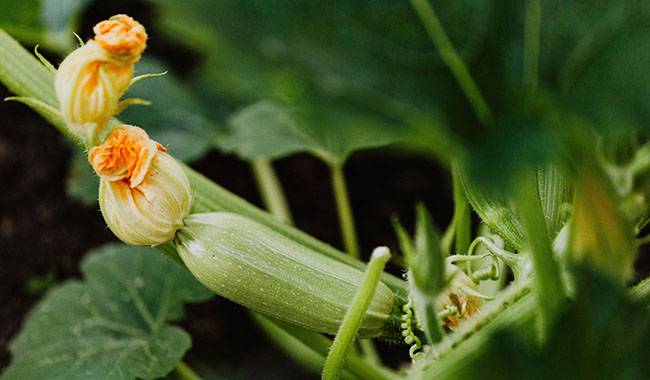
Zucchini and squash are dense varieties of the cucurbit family. Zucchini came to Europe in the 16th century as a little-known American curiosity and was not used as a food until the 18th century. The chemical composition of these varieties is almost identical. In cooking, one variety successfully replaced the other.
What a beautiful garden when the gourd culture is in full bloom! Every other day it is nice to clear green zucchini from the garden, bright yellow or almost black zucchini, and pumpkins that look like delicate hedgehogs. Superficially, they differ only in the individual elements of the above-ground parts of the herbaceous shrubs (mainly the shape and color of the fruits, and the shape of the leaves).
Zucchini, pumpkin is an annual plant with a primary root. The above-ground part of the plant is covered with rough, thorny hairs (thorns). Stems with short internodes help to form dense forms. The leaves are large, dark green, and long-petiolate. The plant has large single flowers of a yellow hue.
The fruit of zucchini is elongated, while the fruit of pumpkin is round (star-shaped). For food purposes, 7-10-12 ovaries are collected daily. Zucchini is harvested when the fruit size is 8-12 inches (20-30 cm) and varies in color – white, yellow, dark green, and almost black. Zucchini differs in its early maturity and almost uninterrupted fruiting. The first early varieties of zucchini are harvested on the 40th-50th day. Pumpkins are harvested with fruits 1-2 inches (2.5-5 cm) in diameter and greenish-white and light green in color. The large mature fruits are used for livestock feed. The crop forms almost at the time of frost.
Useful characteristics of zucchini and squash
From these representatives of the pumpkin family, you can cook the most exquisite dietary soups, fry intoxicating zucchini, and zucchini slices, and quickly cook fragrant pancakes. The flesh of pumpkin contains 2-2.5% sugar, up to 12% solids, easily digestible carbohydrates, pectin, vitamins, and trace elements. The yellow-fruited variety (zucchini) has a better carotenoid content than carrots. These vegetable crops are rich in vitamins, trace elements, and other very useful substances that can replace a large part of the drugs used to treat diseases of the gastrointestinal tract, urinary system, etc.
Tips for growing zucchini and squash
The most suitable soils for growing zucchini are black, loamy, and chestnut soils. They do not tolerate strong shade. They grow better in bright light, but can only tolerate half-life for a certain amount of time. Solanaceous and leguminous plants are good precursors and neighbors for crop rotation. If the soil is deficient in nutrients, add 3-5 grams of nitroglycerin to the hole and mix with the soil before planting. Spread and add humus or mature compost in about 0.5 buckets per 11 square feet (1 square meter). Do not need to do this again to avoid nitrate build-up in the fruit.
Zucchini and squash are sown around February-early March when soil temperatures rise to about 59°F (15°C). Any landing pattern (square, tape, regular). The only conditions are a row of 16-24 inches (40-60 cm) and sufficient distance between rows – from 20-35 inches (50-90 cm). Seeds are planted 1-2 inches (2.5-5 cm), with two seeds per hole. After germination, remove weak plants by pinching under the roots. Seeds can be sown in several periods, 12-15 days apart.
Tips for caring for zucchini and squash
Zucchini and squash are moisture-loving crops. They do not tolerate drought, soil, and air. Therefore, the main care is related to irrigation, which must be done every 7-10 days with a sufficiently high amount of water, but without flooding the crop. The water should soak into the soil and not stay on the surface. After watering, loosen and cover the soil until it is completely covered with leaf mass. If the soil is well seasoned with fertilizer before planting, no fertilizer is needed. It is important to respect the distance between plants. As the planting thickens, especially in pumpkins, the yield decreases. In the implementation of all the necessary agrotechnical measures, the crop is almost free from diseases.
Varieties of zucchini and squash
Round Zucchini
Pattypan Squash
Black Beauty
Gourmet Gold
Magda
Zucchini Flowers
Golden Egg
Rampicante Zucchini
Cocozella
Gadzukes
Zephyr
Crookneck Squash
Caserta
Dunja Zucchini
Tromboncino Zucchini
More Related Information About Grow Zucchini & Grow Squash
Radish
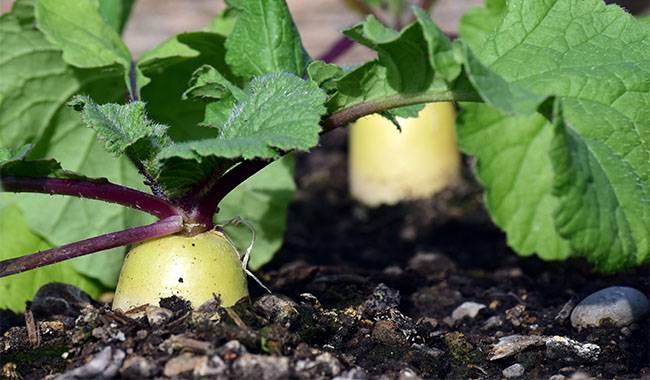
Radish is a type of radish. It is an early vegetable crop of the cabbage family. China is considered to be the birthplace of Radish. An edible vegetable crop that has spread through many countries in Europe and the Asian continent. radish was introduced to Europe under the early reign and did not become popular until the early 20th century when it took its place among the early vegetables.
Radish is a 1-2 year crop. In the first year it forms a leaf and tuberous crop, in the second year it throws a peduncle with small white or pink flowers. There is a group of Radish varieties with 1-year root sprouts. The root crop, 0.4-1 inches (1-2.5 cm) in diameter or larger, is covered with a thin protective skin of different colors: pure red, yellow, purple, pink with white tips, pure white, etc. The fruit flesh is white or slightly pinkish. The shape of the tuberous crop is round, oblate, slender, and fusiform.
Radish belongs to the short-day plant group. Sown in early spring and fall, Radish has time to root before flowering under short daylight conditions. As the length of daylight increases to 14 hours, the vegetable plants flower without forming a mature storage root crop. This feature should be taken into account when sowing Radish. 10-12 hours of intense light is enough for Radish to grow a root mass crop weighing up to 300 grams.
The next characteristic of Radish is the requirement for light intensity. Due to the lack of it, this vegetable does not produce roots, or they grow small and ugly and taste disgusting.
In Radish, the root system is located in a soil layer of 4-6 inches (10-15 cm). This characteristic can explain the high cultural demands on fertility levels and the environment. Nutrient deficiencies and soil drought cause the crop to form coarse, fibrous roots with a bitter taste. If Radish is grown in high soil moisture, then it starts to suffer from fungal diseases. Therefore, any deviation from agrotechnical requirements can lead to yield loss or flora with pedicels.
Useful characteristics of Radish
Radish has a special pungent taste due to mustard oil accumulated in root vegetables. radish is used in early spring in vitamin salads, and rosemary soup. Gourmets use the leaves of Radish, which contain more vitamins and other nutrients than root crops.
Radish roots contain silicon, which helps strengthen the walls of blood vessels. It suppresses negative intestinal microflora and cleanses the body of mucus. It increases appetite, raises hemoglobin levels, and has diuretic and cholagogic effects. In folk medicine, the root vegetable is finely ground and used as a compress for sciatica and arthritis.
Tips for growing Radish
Radish is known for its high frost resistance. Sowing begins in April or when the soil warms to 50-68°F (10-20°C). Seedlings can tolerate frosts as low as 26-25 °F (-3 to -4°C) and adult plants can tolerate frosts of 23-21 °F (-5 to -6°C). At optimal temperatures without sudden changes, Radish seedlings emerge on days 3-5 and technically mature tuber crops start from seedlings on day 20. With fluctuations in temperature, and unforeseen short-term cooling, tuber crop formation was delayed by 10-15 days. Under these conditions, the first harvest of technically mature tuber crops is even later.
The most practical is the common Radish sowing – 2 inches (5 cm) in a row and about 4 inches (10 cm) between rows. Seeds are deepened by 0.6-0.8 inches (1.5-2.0 cm). Sow seeds every 15 days to extend the time to receive a fresh product.
Tips for caring for Radish
Humus is introduced when preparing the soil – one bucket per square foot. Radish needs to be thinned after emergence, as thickened seeding can result in cultured arils. After watering, loosen the row spacing.
Given the fairly shallow root system of tuberous crops, the basis of care is to provide nutrients and moisture. the soil under Radish should be kept free of excessive moisture. With excessive watering, fungal diseases can develop, including root rot. During the growing season, Radish is fed once with ash or trace elements. Irrigate with 0.5 cups of ash per 11 sq ft (1 m2 ). m At the beginning of tuberous crop formation.
Varieties of Radish
Watermelon Radish
French Breakfast Radish
Daikon White Radish
Malaga Radish
White Hailstone Radish
More Related Information About Grow Radish
Yardlong bean (asparagus bean)
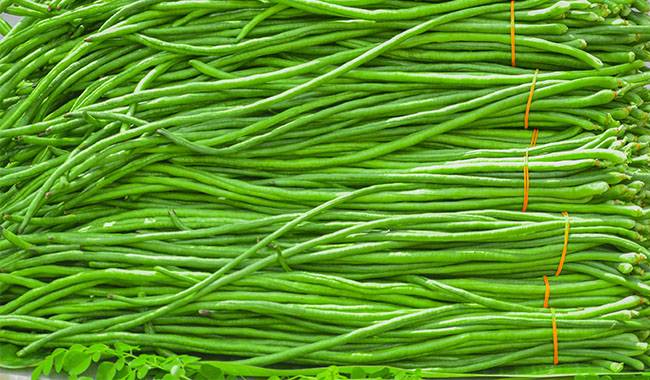
According to some taxonomists, asparagus or green beans from the legume family are a variety of types of common beans. yardlong bean spread to Europe and has long been known as the French bean. Since the 17th century, it has been grown everywhere as a vegetable crop. More than 90 species of beans are grown on different continents around the world, among which the Yardlong bean stands out.
Yardlong bean belongs to the annual climbing group of plants. Leaves with pinnate leaves necessarily have stipules. Moth-shaped flowers, light-colored, grow on peduncles. After pollination, they form long hanging beans, often called pods. yardlong bean beans have a different structure, without the inner parchment layer, which becomes rougher for the biological maturation of the fruit. The absence of the parchment layer allows you to use the green beans as a whole food without separating the seeds.
A distinguishing characteristic of the Yardlong bean is that the soil is rich in nitrogen during the decay of the roots and above-ground material. This feature makes the culture one of the best predecessors for the circulation of garden culture. yardlong bean belongs to the sugar variety in terms of taste, and in terms of nutritional content, it is a low-calorie vegetable crop that is popular among gardeners.
In addition to the dietary direction, this culture is an excellent decoration for summer cabins. Curly forms of some species, with beautiful large flowers of various shapes and colors, are used to decorate the summer cottage and the recreational areas of the adjacent areas of the house. However, beware! These species may be poisonous and unfit for consumption.
For earlier harvests and larger quantities, Yardlong bean is best planted on stands, pulled with thick twine, or in individual bushes on tall stakes. Growing Yardlong beans is within the capabilities of any novice gardener.
Useful characteristics of Yardlong bean
Yardlong bean is an indispensable dish on the summer menu. The flavor and aroma of the first and second courses are mesmerizing. As a low-calorie product, it is used in a variety of diets. The thin, straight pods are characterized by their delicate taste, and high protein content, and can be prepared quickly. Individual grains or whole unripe beans used as food are often called pods in everyday life. yardlong bean is particularly useful for urinary stone disorders. It removes salt from the body. It contains high amounts of potassium in proportion to sodium, which helps to remove excess fluid. The arginine contained in beans is beneficial for diabetics. green beans of Yardlong bean are rich in vitamins, trace elements, etc., but the fully ripe fruits accumulate a lot of protein and the beans become coarse in fiber.
Tips for growing Yardlong bean
The culture is thermophilic and will die in early plantings due to repeated cold weather. Culture requires bright, shade-free, fertile, loose soil and an area that responds neutrally to acidity. yardlong bean is a bad neighbor to peas, onions, fennel, and garlic. For culture, you can grow thyme from spicy seasoned vegetables. The best predecessor is the tuberous crop.
Before planting, introduce nitro-ammonium phosphate potassium into the soil, you can use another similar fertilizer at a dose of 60-70 g / sq. m and 0.5 buckets of hummus or mature compost (if available). Add a cup of ash. Seed cover 1-2 inches (2.5-5 cm), interplant or set thick seedlings, and release seedlings 6-8 inches (15-20 cm) later.
From germination to flowering, about 35-40 days, 2-3 weeks later, ovaries are formed. During this period, if the soil is poor, the plants can be fertilized, preferably with a nutrient solution of mineral fertilizer, and foliar fertilization during bud formation. In most cases, during the growing season, Yardlong bean is not fed and no protective agents are used against pests and diseases. For this reason, they refer to it as an unpretentious vegetable crop group whose care is limited to a minimal time commitment.
Regular and moderate watering followed by mulching is the key to a quality crop. Harvesting starts 10-12 days after the oviposition stage. Beans were selectively cut at the milky maturity stage.
Yardlong bean varieties
‘Stickless Wonder’ is an unusual dwarf variety. The vine only grows to about 30 inches tall and does not require a trellis. Plants begin flowering early (40 days), but like many bush beans, they do not flower as long as the taller vine varieties. Seed germination to harvest is usually about 54 days.
“Yard Long” (white seeds, black seeds, red seeds, extra long) Usually you will find only yard-long beans marked on the seed packet, but there are subtle differences between varieties. Any of the green varieties can provide a good place to start experimenting. They mature in about 90 days.
“Liana” is a diurnal variety that starts producing 70 days after germination. It is also recommended as a fall crop in warm climates.
“Purple Podded” is a good choice for hot climates. It retains most of its color when stir-fried. This variety takes 90 days to mature.
“Red Noodle” is similar to “Purple Podded”, but has a more flavorful and crisp texture. It takes 95 days from seed germination to harvest.
Peas
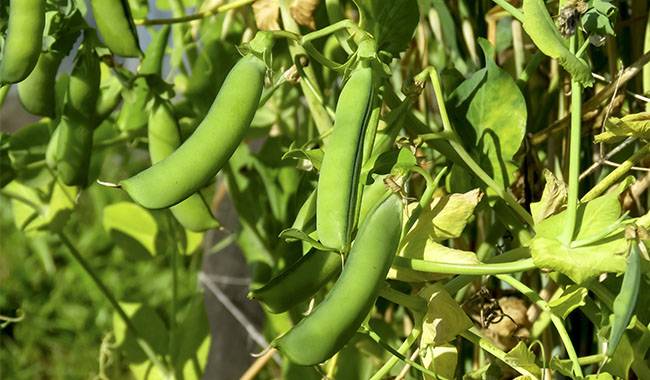
Peas belong to the legume family of herbs. The origin of peas is associated with West Asia and Eastern Mediterranean countries. The distribution area covers about 60 countries worldwide. The most common type is the common pea. It is used as a food and fodder crop.
Biological characteristics of peas
Pea – a mild climate, heat intolerant plant, an all-day crop. Photophilic and does not tolerate long periods of shade. It does not form mature fruit in areas with short sunlight hours, and some varieties do not even flower. Seedlings tolerate temperatures down to 26-21 °F (-3 to -6°C). As they age, cold tolerance is lost, so for peas, it is necessary to choose areas that are warm and free of constant winds.
Peas have high moisture requirements and respond to irrigation, but cannot tolerate standing water and with prolonged wet weather or flooding, they can suffer from fungal diseases that cause root death and plant mortality. The main characteristic of the pea is its symbiosis with the tubercle bacillus. By assimilating free atmospheric nitrogen, the nodule bacterium contributes to soil saturation, an element that is very important to the plant. When plant residues of peas are grown, the soil is enriched with nitrogen.
Peas are able to absorb phosphorus from insoluble compounds, which is important for subsequent crops grown on phosphorus-poor soils. Large amounts of potassium are required. Due to deficiency, pea fruit formation is inhibited.
Useful characteristics of peas
Peas are very nutritious. It contains high amounts of vitamins, trace elements, fiber, amino acids, proteins, and other compounds. It has a diuretic effect and lowers sugar levels. A soup of grass and pea seeds is used for urolithiasis, and a paste of pea powder – is for inflammatory abscesses, boils, and carbuncles.
Green peas or grain milk matured sugar varieties are used for food, soups, main dishes, and salad preparations. Technically matured peas can be frozen or canned, and after drying the organisms can be left in winter storage.
Tips for growing peas
Peas do not tolerate weedy fields and require highly fertile soil with pH = 6.8-7.4. It is impossible to grow this crop on heavy, acidic, sandy, and alkaline soils.
Hardy culture, germinate at 30-28 °F (-1 to -2°C) for 15-25 days. The optimal temperature range to ensure germination within 4-5 days is 59-77 °F (25-25°C) with moist soil.
Sow seeds at 0.4-1 inches (1-2.5 cm), the thicker the better. The distance between rows, at the owner’s discretion, is 13-16 inches (33-40 cm). Seeds can be sown at 10-15 day intervals, thus extending the production time of young peas.
Tips for caring for peas
Culture doesn’t need to care. Sow seeds, water, and cover with mulch …… Wait for harvest. Watering is required during dry periods, combined with fertilization if necessary (low germination, slow biomass development, low fruit set). In this country, it is better to grow peas on supports, such as asparagus beans.
Varieties of peas
English Peas (Pisum sativum, var. sativum)
USDA Growing Zones: 2 to 9
Sun Exposure: Full to partial sun
Soil Needs: Loamy
Snow Peas (Pisum sativum var. Saccharum)
USDA Growing Zones: 2 to 9
Sun Exposure: Full to partial sun
Soil Needs: Drier, enriched soil
Sugar Snap Peas (Pisum sativum var. marcrocarpon)
USDA Growing Zones: 3 to 11
Sun Exposure: Full to partial sun
Soil Needs: Well-drained loamy soil
More Related Information About Grow Peas
Lettuce
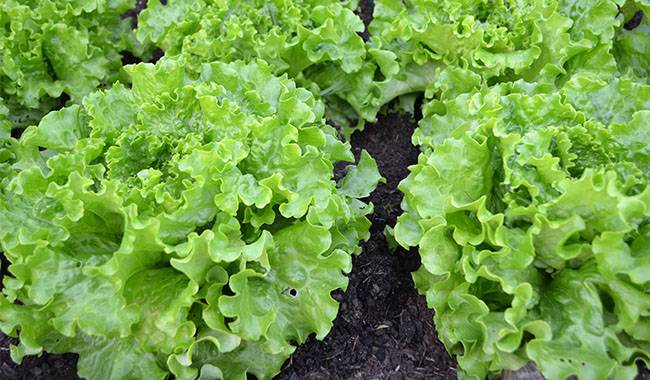
Lettuce or lettuce is classified as a separate genus in the Asteraceae family. Wild forms are most common in the warm temperate regions of Eurasia. Of the 150 species, the best known of the cultivated forms is the sown lettuce (lettuce), which has 2 varieties – leaves and heads. It first began to grow in the Mediterranean as a vegetable plant.
Lettuce is an annual plant. Due to the content of latex, the leaves and young stems of lettuce used for food have a bitter taste. Lettuce is a long-day plant, light-loving. A garden bed with adequate lighting is required. Head varieties in particular need bright lighting. In low light conditions, cabbage heads will not tie together.
Lettuce is a hardy crop. about 46 °F (8 °C) is sufficient for the plant, but 50-59 °F (10-15 °C) is best for forming dense heads of lettuce. At the leafy inflorescence stage, lettuce can withstand frosts down to about 23 °F (-5 °C).
For lettuce, the type of soil is not important, but it should be neutral – pH = 6.4-7.2. Lettuce does not tolerate saline and acidic soils. Requirements for soil fertility level. Lettuce is hygroscopic. As the soil becomes dry and the temperature rises, lettuce begins to flower to the detriment of head formation.
Useful properties of lettuce
Lettuce belongs to the group of dietary vegetables. Lettuce leaves contain high amounts of vitamins, calcium salts, potassium salts, sodium salts, copper salts, boron salts, iron salts, and other elements. The interaction of potassium and sodium salts has a positive effect on the water balance in the body and is an excellent diuretic. Leaf lettuce is used for food in the leaf rosette stage. The appearance of the stem is accompanied by the formation of a milky sap containing lactin, which gives the plant organ a bitter taste. Vitamin salad is made from the leaves and heads of lettuce, which can be stewed and fried. In chronic gastritis and gastric ulcers, fresh lettuce juice has a therapeutic effect, lowers blood pressure, has a sedative effect on the central nervous system, and improves sleep (mild sleeping pill).
Tips for growing lettuce
Once the soil has warmed to 50 °F (10°C) to a depth of 0.4-0.6 inches (1-1.5 cm) and rows are spaced 6-8 inches (15-20 cm) apart, sow the lettuce with the seeds. Perform post-emergence interplanting. Cultures can be sown until the end of August, 10-15 days apart. Early maturing varieties are sown in spring and late-maturing varieties in summer (mid-July). early leafy varieties are harvested 30-45 days later (from the moment of germination).
Lead early lettuce varieties are sown between early April and early May, mid-to-late April, and mid-June. The crop must not be thickened. After germination, 3-fold interplanting is done, leaving 8-12 inches (20-30 cm) between rows and 8-15 inches (20-38 cm) between rows.
Soil for lettuce should be well cultivated, free of clumps, loose, and moist. Organic fertilizer is applied to the previous crop (pre-seeded crop), including cucumbers, tomatoes, early potatoes, and cabbage. All preparations for sowing are done in autumn. If the soil is poor and dry, fertilize with a 0.5% solution of nitrophosphorus before planting. You can make 50 g/11 sq ft (1 m2). Use in solid form for irrigation. Sow seeds are covered with a fine mulch.
Tips for caring for lettuce
Timely and moderate watering will increase the yield of lettuce and improve the taste of the crop. After germination, loosening 1-2 times is sufficient to remove weeds from the soil. In the future, cultivation (except watering) does not need care because rapid growth in a short time will cover the soil full of green matter and crush weeds. If necessary, apply a follow-up fertilizer in the form of a wood ash infusion, diluting it to a low concentration before application. Bring the solution into the aisle and mulch.
Lettuce is selectively harvested as the vegetables grow. The first cut is made when the green matter reaches a height of about 4 inches (10 cm). Harvest banded lettuce at technical maturity.
Varieties of lettuce
Leaf Lettuce
Romaine Lettuce
Iceberg Lettuce
Boston Lettuce
Bibb Lettuce
Kale
Arugula
Spinach
Radicchio
Endives
Frisée
Chard
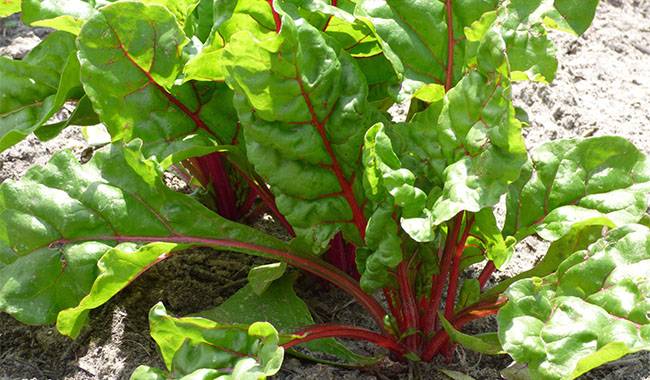
Chard or leaf Chard, Chard is a common Chard of the Amaranth family. a very ancient culture, used as food by the ancient Romans and Greeks. Currently, it is widely used in Europe and Japan because of its beneficial properties.
Chard is a two-year-old culture that in the first year drives out the leafy tops up to 30 inches (75 cm), and in the second year – peduncles with seeds. In horticulture, the main planting of leaves and petioles. The color of the petiole varies from green to bright red and silvery-white. Leaves have large wavy or corrugated plates of leaves of different colors and shades (green, red, scarlet, red-green).
Unlike true ones, Chard leaves do not form tuberous crops. The root system is critical and branched, penetrating deep into the soil to provide itself with water and nutrients. chard requires virtually no care, forming quite a high leaf and petiole mass.
Bright, spectacular Chard foliage is attractive in summer lodge designs. The biennial herb is usually sown along mountain ridges. Until late fall, varieties of white, red, scarlet, yellow, and miscellaneous (mixed) foliage are excellent decorations for the site.
Useful features of Chard
Chard is known for its medicinal properties in diabetes, anemia, kidney, liver, heart, and blood vessel diseases. Used for hyperglycemia. Effective against baldness. Improves immunity and promotes faster growth in children. Used as a preventative agent for oncological diseases due to the presence of vitamins E and C in the leaves and petioles, combined with trace elements (including the very important zinc), lutein, zeaxanthin, quercetin, etc. Chard leaves are rich in beta-carotene, which improves vision and reduces the possibility of glaucoma, cataracts, and night blindness. This is not all the useful properties of the real wonder plant.
Chard leaves and petioles completely replace common Chard roots in spring Chard roots, borscht, cabbage roll preparation, and snack designs. Spinach varieties cooked separately are used as dietary products along with Chard.
Tips for growing Chard
Chard is a photophilic culture that tolerates temporary penumbra well. chard seeds are similar to common chard seeds, so many of the methods for sowing, caring for, and harvesting are duplicated.
Chard grows well after cucumbers, tomatoes, carrots, peas, and potatoes. chard’s root system penetrates deep into the soil, so dig to a depth of 12-16 inches (30-40 cm) during fall preparation, preferably without turning the layer. On heavy or poor soils, introduce loosener – sand, peat to increase fertility – humus, mature compost.
Fertilizer should not be applied under Chard so that the plant does not accumulate too much nitrate in the leaves. It is feasible to apply 60-70 g/sq of nitrophosphorus or other fertilizer before sowing. chard is unpretentious and frost resistant. Seed priming can be done in the fall at soil temperatures of 41 °F (5 °C) or in early spring.
Seeds germinate at 41-46 °F (5-8 °C), but 50 °F (10 °C) is optimal. The sowing time roughly coincides with the planting time for potatoes. You can plant and prepare seedlings.
Sowing is general. Seeds are planted 1-2 inches (2.5-5 cm) deep and in rows, 10-20 inches (25-50 cm) apart, depending on the variety. seedlings are obtained after 2 weeks. Sowing is repeated in three stages: in the first decades of May, in July, and before winter – early October. The shoots become thin.
Tips for caring for Chard
Care is the same as for common Chard, especially at the initial stage. Chard is drought-resistant and it is necessary to water the crop with sufficient standards during the stage of seed germination and formation of the first leaf wreaths.
After germination, the weak shoots of Chard in the holes are pinched at the roots. The Chard crop thins out when 4-5 leaves appear in the rosette. Leave 4-5 plants per 40 inches (1 meter) extension. For more tender leaves, water the Chard after each leaf.
The first cutting of Chard leaves with petioles is done 30 days after germination. A clump of 5-7 well-developed leaves should be formed. Slicing is done at the soil level, but with care so as not to contact the growing points. The more the leaves are cut, the thicker the new leaves will grow. Also, cut no more than 25% of the well-developed leaves.
Chard chasing is not advisable because the culture accumulates nitrates in the petiole mass. It does not need protection from pests and diseases, subject to agricultural techniques.
The culture can reproduce well by self-seeding. In spring, with the arrival of the warm period, self-sowing occurs in autumn. In addition, the seedlings of the plant emerge throughout the warm period and form green masses until frost.
Chard is a very essential horticultural crop that does not require much time to care for.
Varieties of Chard
Barese
This white-stemmed heirloom variety is a dwarf type, only 9 inches tall at maturity. Growth is rapid and you can harvest small leaves in 25 days or mature leaves in 45 days.
Bright Lights
The colorful ‘Bright Lights’ produces stems in yellow, orange, gold, pink, red, white, and stripes. This 1998 All-American Select Edible Vegetable Champion matures in 55 to 60 days and grows to about 20 inches tall. It adds vibrant color to your garden and is sometimes grown purely for its ornamental value.
Fordhook Giant
Introduced by Burpee in 1934, his mildly flavored cultivar has thick, dark green leaves with plenty of sardines that are quite soft. The young leaves can be used raw in salads, and the mature leaves are best cooked for a sweeter flavor. It grows to 20 to 28 inches tall and matures in 60 days.
Large White Ribbed
This heirloom variety has wide, flat, white stems and smooth, tender leaves. The young leaves make a delicious addition to salads, and the mature leaves can be steamed or sauteed. The “Big White Rohan” grows to about 20 inches tall and matures in about 60 days. Unfortunately, this variety may be more susceptible to pests such as leaf picker thieves.
Lucullus
Lucullus is an heirloom variety of mustard named after a Roman emperor who was known as a gourmet cook. Lucullus grows to about 20 inches tall and matures in 52 to 55 days. The leaves and stalks have a sweet, mild flavor and store well in the refrigerator.
Magenta Sunset
The color of the stems of this heirloom variety is striking – bright pink and very pretty!” Magenta Sunset” has a maturity period of 3 months. Magenta Sunset” matures in about 65 days and grows to about 24 inches tall. If the seedling is exposed to cold temperatures, it may have a tendency to shed its skin.
Orange Fantasia
This open-pollinated type displays bright orange stems topped with dark green-brown leaves and can be used in salads when harvested at a young age. This is a bolt-resistant cultivar that fully matures in about 65 days after planting and stands about 20 inches tall.
Peppermint
This open-pollinated type is named not for its flavor, but for its white stems with reddish-pink stripes. Peppermint’ matures in 53 to 63 days, but you can start picking small leaves in 35 days. This variety can grow to about 24 inches tall.
More Related Information About Grow Beetroots
Potatoes
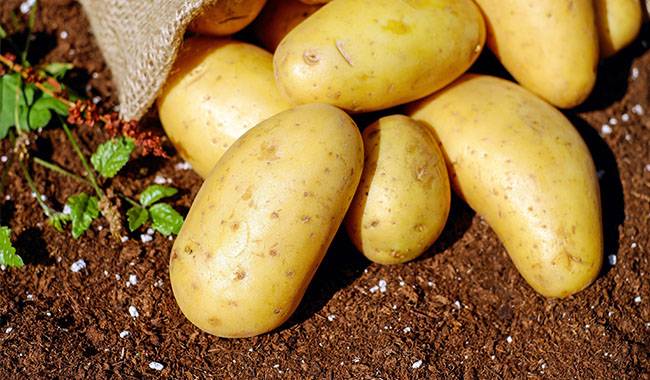
Early potatoes appear on the market at the end of May – the first half of June at very high prices. However, it can be grown independently, and within 45-50 days after planting the table will be decorated with tempting delicacies.
The potato’s homeland is South America, where modern cultivars and wild relatives of the variety still grow. About 9,000 years ago, the potato was introduced into the culture by the natives of modern Bolivia. Today, the potato’s range covers almost all countries with climates suitable for growing in natural conditions.
Depending on when the tubers are harvested, potatoes are divided into three groups of varieties: early, medium, and late. In the garden “no-hassle”, it is most convenient to grow early potatoes:
- early planting of tubers will get rid of the main pest – the Colorado potato beetle, which does not like cold weather and appears later, when the tops of potatoes are fully developed and the first wave of beetles does not cause significant damage to early cultures.
- being less affected by fungal diseases and having a significant advantage in overcoming the most common potato disease, late blight
- early harvest for gardeners; no need to purchase expensive products
- weather conditions that minimize the time needed to care for the crop.
Useful characteristics of potatoes
Young potatoes are rich in ascorbic acid and folic acid. Potatoes, due to their high mineral salt content, alkalize the body, thus counteracting the formation of malignant tumors. The raw juice cleanses the body of toxins and is used for the treatment of the gastrointestinal tract. Grated raw potatoes are a good painkiller for osteochondrosis. The potassium contained in potatoes has a positive effect on the function of the heart and kidneys.
Potato is the second bread of the earth. It contains essential vitamins, dry matter (up to 25%), up to 22% of starch, 1.5-3.0% of protein, and other useful compounds. Potatoes can make over 100 dishes that are never repeated. A very valuable food crop that requires no special care and can be afforded by beginning gardeners.
Growing early potatoes
Early potatoes are grown on the south side, where the soil warms faster. You can start planting at soil temperatures of 46-50 °F (8-10°C), depending on the type.
For planting, potatoes germinate at the end of February, preferably using ultra-early and early zoned varieties. Germinated potatoes are planted in the normal way, with 10 inches (25 cm) between tubers and 18-24 inches (45-60 cm) between rows, depending on the variety. Add 2 cups of humus and 0.5 cups of wood ash to the wells and mix with the soil. If necessary, moisten the holes. Germinated tubers are planted on a soil layer of about 2 inches (5 cm) with large shoots – up to 4-6 inches (10-15 cm) tall.
On light soils, tubers are buried 4-6 inches (10-15 cm), but there is a danger that late sowing is not a friendly shot. Because of the very early sowing and the possibility of cold weather again, the beds are covered with several layers of film or special mulching material (lutrasil, spunbond). By the way, to minimize care, you can cover the soil with lutrasil or other materials for potatoes. This technique will negate potato care: weeds, Colorado potato beetles, slugs, and other pests will disappear. The soil will stay moist longer, among other benefits.
Tips for caring for potatoes
All care procedures for early potatoes are done in dry, sunny weather.
- preemergence loosening removes filamentous weeds from the soil.
- 28 °F (-2°C) return frost can damage seedlings and young plants. If frost is a threat, cover potatoes with mulch material or a double layer of film.
- Make hills after reaching 4-6 inches (10-15 cm) of shrub habit.
- Potatoes cannot tolerate excessive moisture.
- Use more water for potatoes in the flowering and caking stages, the rest of the time – as needed.
- Fill the soil well with fertilizer before planting and do not feed early potatoes. If the soil is not fertile enough, fertilize: before flowering, water with nitrate of phosphorus and fertilize during binding of tubers with phosphorus and potassium fertilizer. You can replace or add wood ashes, which contain high amounts of potassium (an element necessary for potatoes to increase in quantity as the tubers grow).
Early maturing potatoes are harvested with green tops (early June).
Varieties of Potato
Russet Potatoes
New Potatoes
Yukon Gold Potatoes
Kennebec Potatoes
All Blue Potatoes
Adirondack Blue Potatoes
Red Bliss Potatoes
German Butterball Potatoes
Red Thumb Potatoes
Russian Banana Potatoes
Purple Peruvian Potatoes
Japanese Sweet Potatoes
Hannah Sweet Potatoes
Jewel Yams
More Related Information About Grow Potatoes
Rhubarb
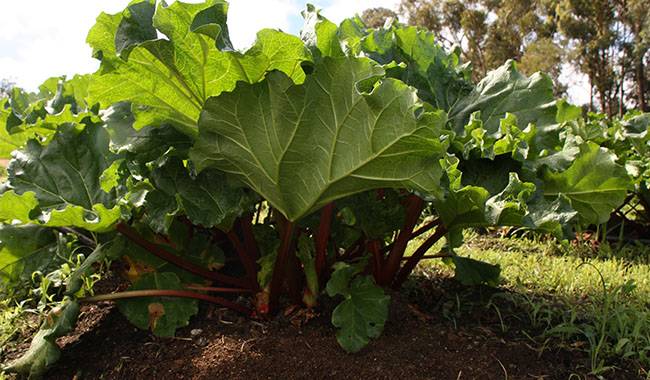
Rhubarb is a perennial herb belonging to the buckwheat family. China is considered to be the native country, where it grows abundantly in moist places, on river banks, up to 80 inches (2 m) high. In cultural form, it grows mainly in China and eastern Tibet. Hardy culture. Commonly found in colder regions. It also grows well in the south. The most familiar species in European countries is the medicinal rhubarb (Rheum officinale), used in official and folk medicine and for culinary purposes.
Rheum belongs to a well-developed perennial flora with woody stems and branched brown or reddish rhizomes that grow up to 20 inches (50 cm) deep and 40 inches (1 m) long on a side, in partial shade, and in light. Above-ground stems are annuals, with only the rhizomes hibernating. The stems are green, sparsely striped, and spotted with red, fluted, rough from small elastic tomentum, and hollow inside.
The stems are covered with two different types of leaves. Radical – Long leaves, up to 30, very large. The petiole is 23-27 inches (60-70 cm) long and the leaf blade is entirely palmately lobed. Smaller stem leaves have a broad bell at the base of the petiole at the end of the stem. At the top of the stem is a tall paniculate inflorescence. The inflorescence is 20 inches (50 cm) or more tall, leafy, open, and composed of small white flowers, yellowish or greenish, with a red or pink corolla. In its third year, it blooms in June. The fruit is a trihedral nut. Ripens in July. Are collapsing. They germinate in the second year. Given the strength of the above-ground bushes, it is best to plant rhubarb in a separate bed of vegetables or along a trail. Rhubarb grows in one place for 10-15 years.
Useful properties of rhubarb
Rhubarb is one of the first vegetable crops. group of vitamins such as B, PP, A, C, sugars and organic acids such as rutin and malic acid, high content of pectin substances, higher pectin content than apples in spring, will completely replace apples. The leaves and roots of rhubarb have medicinal properties. The main properties of the root are choleretic and laxative. It is used in anemia and lung diseases. Infusions of the leaves have anti-inflammatory properties. A salad made from the leaves reduces the concentration of sugar in the blood, and the leaves brewed as a tea improve vision.
At harvest, the leaves with petioles are pulled out of the soil. Only petioles rich in protein, carbohydrates, minerals, and other useful compounds should be used as food. The petioles of fresh leaves harvested from the garden have a slightly acidic apple flavor and apple odor. They are used in processed form – for the preparation of vitamin soups, especially after serious surgical interventions on the body, as a filling for pies. Very tasty, lightly aromatic jellies and preserves are obtained from the petioles. The leaves grow quickly, so the early-maturing variety provides the owner with a fresh fortified product throughout the summer.
Characteristics of growing rhubarb
In soil, it prefers rich, water-dense soils; it grows calmly on other types of soil. Beginning in the fall, apply organic-inorganic fertilizer at 13-16 inches (33-40 cm) per layer. After digging, around October, common sowing, 8-10 inches (20-25 cm) later. Seedlings can also be planted through seedlings, but seed stratification is necessary. Seedlings (saplings) or rhizome cuttings 20-30 inches (50-76 cm) are planted by adding humus, compost, or nitrifying phosphorus 60-90 g/square. It is more practical to propagate cultures by dividing rhizomes.
Tips for caring for rhubarb
Care of rhubarb – relax and water. The latter is done after 2-3 weeks with a sufficient amount of water. After sowing, planting, and watering, the soil must be covered. In late autumn, the above-ground material is cut into stumps 4-6 inches (10-15 cm) and when frost occurs, they are covered with spruce branches or other organic material. The first cleaning was done in the 3rd year, sometimes in the 2nd year. To obtain sufficiently thick bleached petiole buds, the shrubs were pulled out 10-12 inches (25-30 cm) in spring, and when the petioles began to lift the soil crust, the soil was raked away and the petiole buds were broken off from the base. Then put the soil back in place. If the shoots are green, mounding is not performed. The petioles burst out when they reach 8 inches (20 cm) in height.
Varieties of rhubarb
Cherry Red
Chipman’s Canada Red
Crimson Red
German Wine
Glaskin’s Perpetual
Hardy Tarty
Holstein’s Bloodred
KangaRhu
Prince Albert
Riverside Giant
Sunrise
Timperley Early
Victoria
More Related Information About Grow Rhubarb




